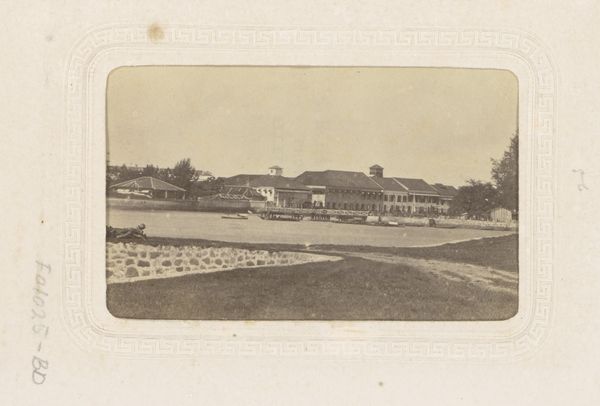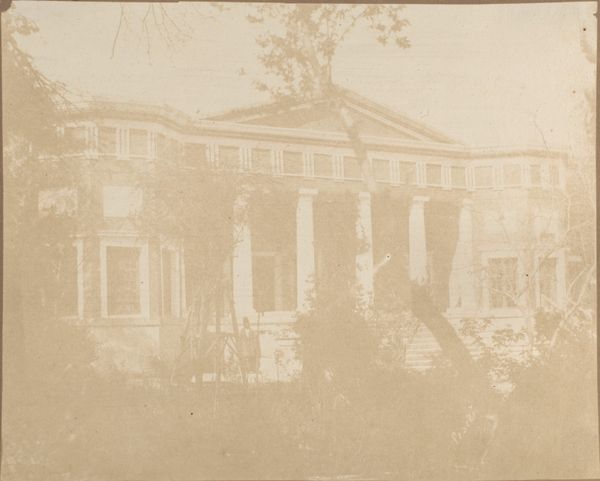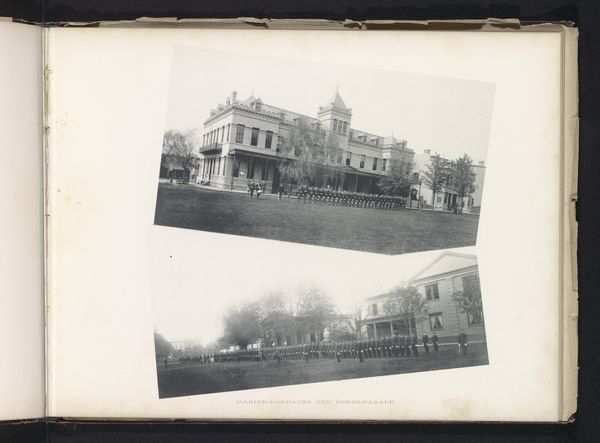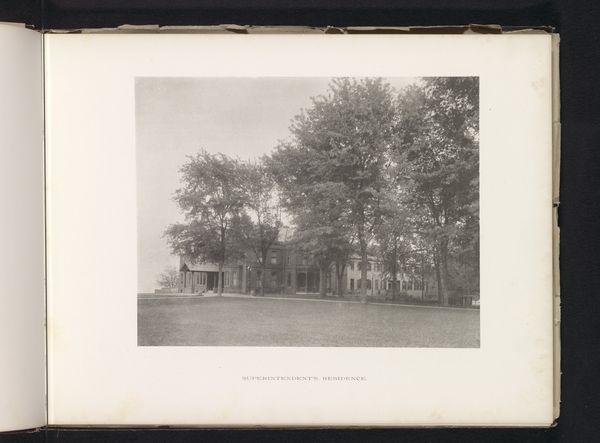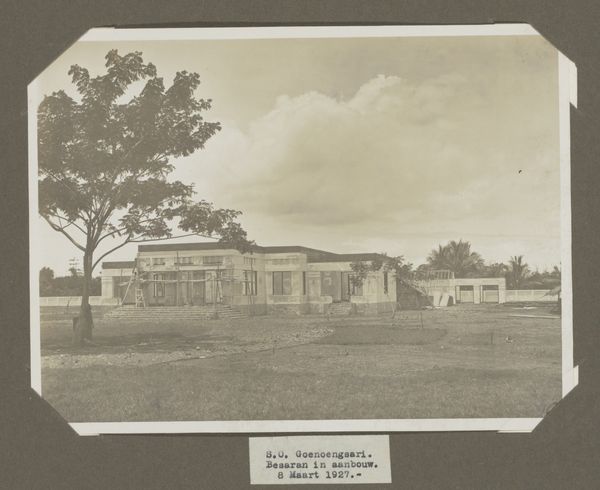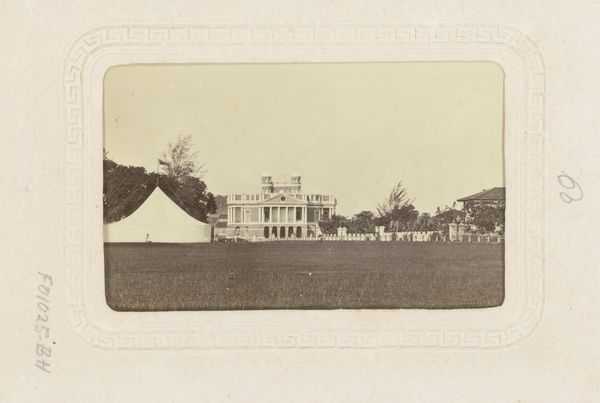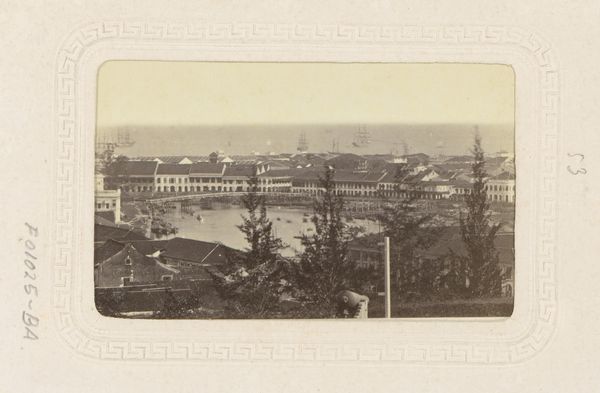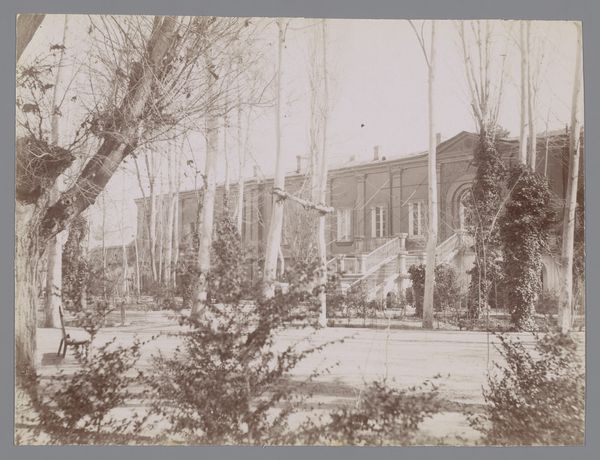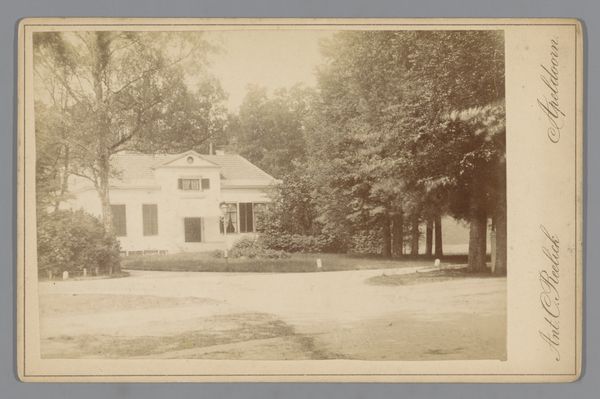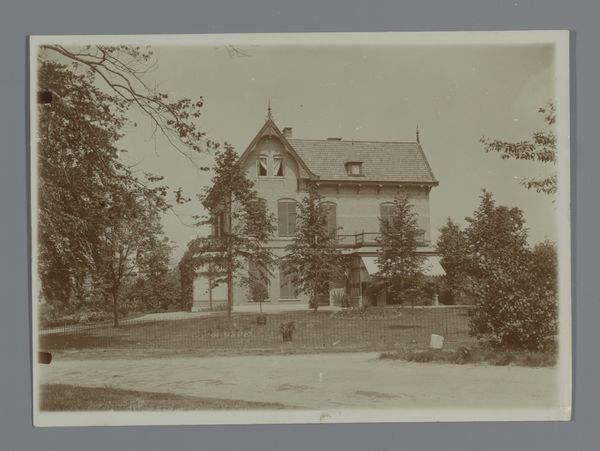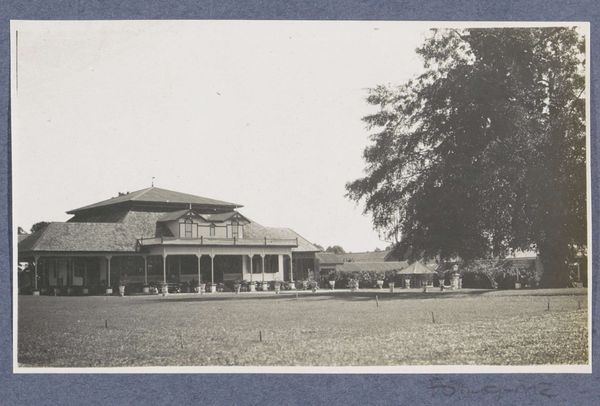
photography, albumen-print
#
landscape
#
photography
#
cityscape
#
albumen-print
Dimensions: height 163 mm, width 107 mm
Copyright: Rijks Museum: Open Domain
Editor: This albumen print, "Gezicht op gebouwen van Camp de Châlons," by Laporte, dates from between 1870 and 1900. I’m struck by the vast, open space and how the buildings seem almost temporary, like a stage set. What echoes do you hear when you look at this photograph? Curator: The photographic medium itself speaks volumes here. The albumen print, popular then, signals a specific moment in the development of visual culture. I see echoes of impermanence in this. Military camps are liminal spaces by definition; how does this resonate in our understanding of landscape photography at the time? Consider that for a lot of military personnel, photographs are important to maintain a sense of identity while they’re separated from their homes, right? What would you say this photo signifies in terms of the individual versus the state? Editor: That's interesting, thinking about identity. I hadn't considered how the image could be more than just a visual record of a place; the trees hint at the transition of seasons. Are we meant to see it as more than just documentary? Curator: Precisely. The careful framing, the inclusion of natural elements – they point beyond mere documentation. How do these features challenge the perceived objectivity often associated with early photography? Think about how notions of national identity were crystallizing during this period, frequently connected to specific landscapes. Do the buildings evoke anything, or remain as stand-ins? Editor: They do seem quite plain. If we consider the date range, then it’s close to the Franco-Prussian War, maybe suggesting a lack of long-term investment in such buildings because of potential military conflict? Curator: A sharp insight. Perhaps the image’s power rests not in what is shown, but what it omits: The human stories, the anxieties of a nation on the cusp of change, rendered visible only through careful examination of seemingly simple visual markers. Editor: So, the photo becomes less about the architecture and more about the history surrounding it and about understanding the photographer’s choice of specific visual cues to express national sentiment or prompt memory? Thank you. Curator: Exactly! It seems we’ve both unveiled hidden layers within this seemingly straightforward vista.
Comments
No comments
Be the first to comment and join the conversation on the ultimate creative platform.
